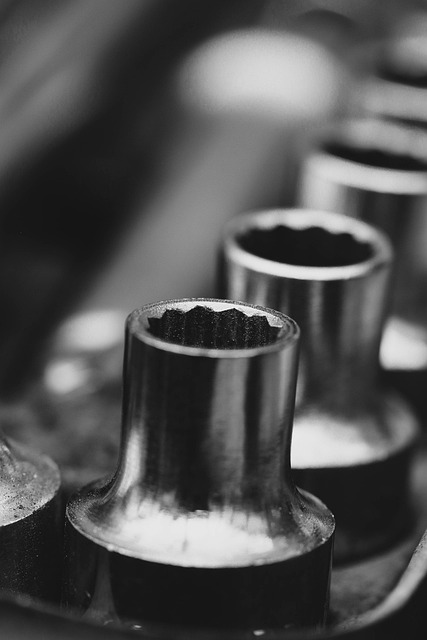Optimizing Electric Vehicle Efficiency: Body Panel Insulation Solutions
Body panel insulation is a critical factor in the success of hybrid and electric vehicles (HEVs), ad…….
In an era where energy efficiency and environmental sustainability are at the forefront of global discussions, body panel insulation has emerged as a transformative technology, playing a pivotal role in various industries. This article aims to unravel the complexities of body panel insulation, offering an insightful journey through its historical evolution, current impact, future potential, and the challenges it faces. By exploring these aspects, we will provide readers with a comprehensive understanding of this essential component in modern construction, automotive, and industrial sectors.
Definition: Body panel insulation refers to the process of installing specialized materials between structural panels (such as walls, roofs, or floors) to enhance thermal efficiency and acoustic performance. It involves a systematic approach to create a barrier that prevents heat transfer, reduces noise, and improves overall building or vehicle comfort.
Core Components: The primary elements of body panel insulation include:
Historical Context: The concept of body panel insulation has deep roots in construction practices dating back centuries. Early methods involved natural insulators like straw and animal fur. However, the industrial revolution brought about a shift towards more advanced materials. In the 20th century, mineral wool became a popular choice for its affordability and effectiveness. Over time, technological advancements led to the development of innovative insulating materials with superior performance characteristics.
The global body panel insulation market has witnessed significant growth due to rising environmental concerns and stringent energy efficiency standards across industries. Here’s a glimpse into its international influence:
| Region | Market Size (Estimated 2023) | Growth Rate (2023-2030) | Key Trends |
|---|---|---|---|
| North America | $15.6 billion | 4.2% | Increasing adoption of smart home technologies, focus on retrofitting existing buildings for energy efficiency. |
| Europe | $13.2 billion | 3.8% | Stringent building regulations, growing popularity of sustainable construction practices. |
| Asia-Pacific | $20.5 billion | 5.6% | Rapid urbanization, government initiatives to promote green buildings and energy conservation. |
| Latin America | $4.1 billion | 4.5% | Rising middle class, growing awareness about energy efficiency in residential and commercial sectors. |
| Middle East & Africa | $3.2 billion | 3.7% | Focus on sustainable development projects, particularly in urban areas. |
Regional Variations: Each region has unique dynamics driving its adoption of body panel insulation:
The body panel insulation market operates within a complex web of economic factors:
Continuous innovation is a cornerstone of body panel insulation’s evolution, pushing the boundaries of performance and efficiency:
Governments worldwide play a pivotal role in promoting energy efficiency through policy interventions and regulatory frameworks:
Despite its benefits, body panel insulation faces several challenges that require strategic solutions:
Strategic Solutions: To overcome these challenges:
Singapore’s commitment to sustainable development is showcased through its iconic Green Mark building certification scheme. The National Research Foundation (NRF) initiated a project to retrofit older government buildings with advanced body panel insulation. This involved using smart, high-performance materials, resulting in significant energy savings and improved indoor environments. The success lies in the comprehensive approach, combining technology, policy, and financial incentives to drive sustainable transformation.
Tokyo’s metropolitan government launched a pilot project focusing on body panel insulation to enhance the resilience of older public housing. By installing advanced insulating materials, they achieved substantial reductions in energy consumption during extreme weather events. This case highlights the potential for body panel insulation to contribute to climate change adaptation and disaster-resistant infrastructure.
A German steel manufacturer implemented a comprehensive energy efficiency program, including body panel insulation in their manufacturing facilities. This led to a 20% reduction in overall energy consumption, resulting in substantial cost savings. The project’s success demonstrated the significant impact of targeted insulation strategies on industrial energy efficiency.
The future of body panel insulation is promising, with several growth areas and emerging trends shaping its trajectory:
Body panel insulation has evolved from a basic construction component to a vital tool in the pursuit of energy efficiency, environmental sustainability, and comfortable living spaces. This article has provided a comprehensive overview of its historical context, global impact, economic considerations, technological advancements, policy frameworks, challenges, and successful applications.
As we look ahead, the future prospects for body panel insulation are promising, with innovations set to shape the industry’s growth. By addressing current challenges and adopting emerging technologies, this technology will continue to play a pivotal role in creating sustainable buildings, cities, and industries worldwide.
The journey of body panel insulation underscores the importance of continuous innovation, thoughtful policy-making, and collaboration across sectors to meet global energy and environmental goals.

Body panel insulation is a critical factor in the success of hybrid and electric vehicles (HEVs), ad…….

Body panel insulation is a modern automotive design feature that significantly improves driver and p…….

Electric vehicles (EVs), though quieter than conventional cars, still face noise challenges from mec…….

Body panel insulation is a crucial automotive component that goes beyond thermal protection, enhanci…….

Body panel insulation significantly improves vehicle comfort and performance by strategically placin…….

Upgrading body panel insulation in older vehicles is a strategic modification that boosts energy eff…….